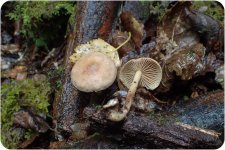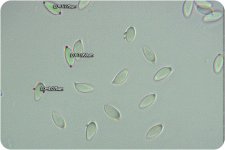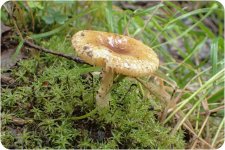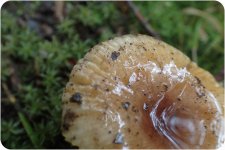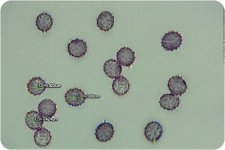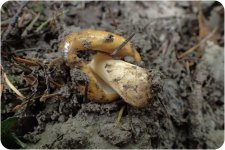The first LBM has no real redeeming features except that the end of the stipe is reddish. Spores white, smooth, almond shaped measuring about 8x4 um. The other has globular spores, also white, with tiny warts. Shows some characteristics of a deceiver but seems rather big at about 5cms, with quite a short stipe. They were both in the leaf litter of an oak/birch copse.
Any help appreciated.
Any help appreciated.




